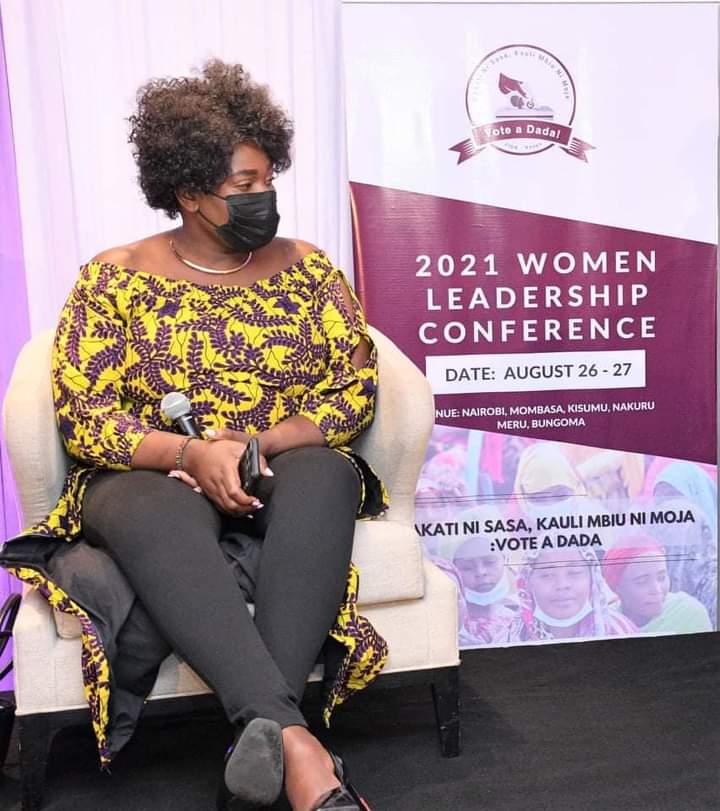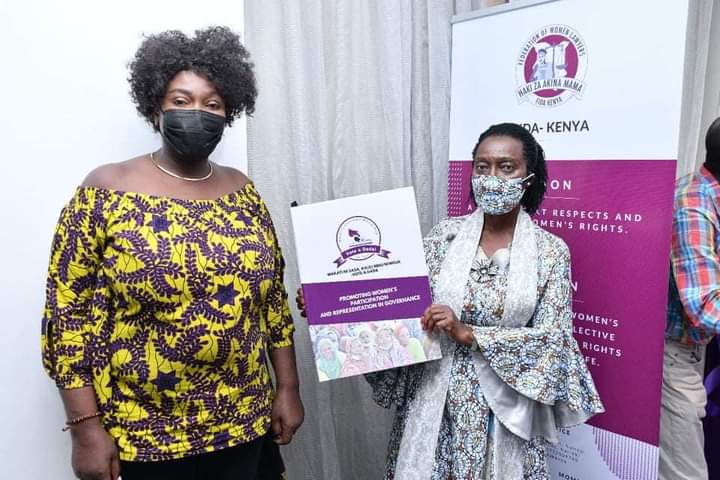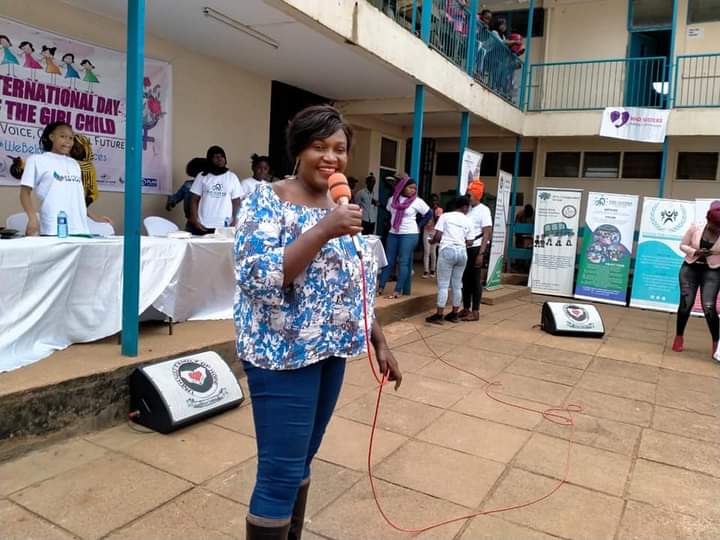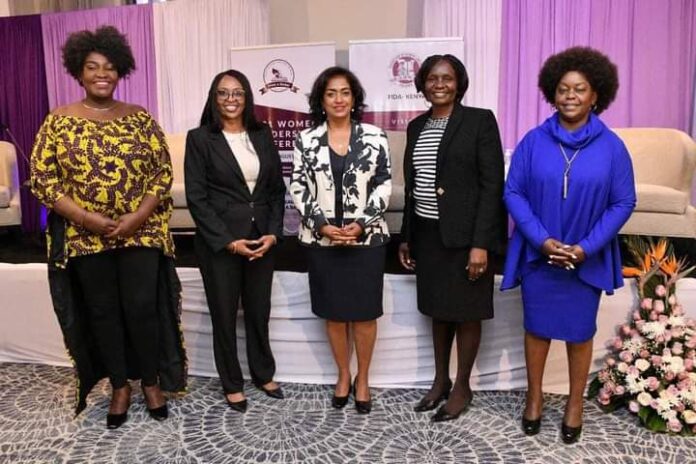By Osoro Kenn
Nairobi, Kenya: Women’s aspirations into leadership positions have always been met with many impediments. Many women have been prevented from vying for various competitive political seats due to the expensive nature of the political campaigns which includes the financial implications and patriarchal nature of the society in the country.
The nature of the campaign trails leads to ungodly hours in the night which many women find it risky to maneuver especially in the informal settlements. These are some of the battles women politicians have to grapple with when they decide to join the political arena.

May Cecilia Ayot, a former MCA in Laini Saba Ward, Nairobi County, is a notable female politician who campaigned tirelessly at night during the 2022 general elections. This is because most families in informal urban settlements are available in the evening after work.
Ayot, like many other women aspiring into the political space, would face some harsh realities which she described as setbacks in the online violence and harassment in the digital spaces.
“The advent of digital spaces has seen more women criticized, made subject on social media platforms, we are body shamed, cyberbullied, our opponents at times could invade our privacy and family issues, making several women fear being in that space.”
There’s no level playing field for women in the political arena, says the one-term member of the county assembly which she termed as retrogressive.
“Politics is very ugly, draining, and expensive for a woman. From just nominations, the first thing that normally happens to women is that they are beaten and at times even raped, this, in turn, scares women a lot,” she said.
Though the constitution has enshrined provisions for gender principles, this has not yet seen women fully included in leadership positions in different categories.
The Two-Third Gender Rule that should be legally manifested is still throwing shade at women politicians who are forced to try the hard way and by all means to ascend to power.
One of the things that prompted the promulgation of the new constitution was a sense that the governance structure and development of the country were very exclusive at the time. It left too many people and regions behind, among them women, youth, and persons living with disabilities.
This resulted in ‘not more than two-thirds gender’ as an inclusion principle which stated that in any elective or appointive public body, there should not be more than two-thirds of one gender, and at the very least there must be a third of the opposite gender.
This principle within the confines of the constitution under Articles 100 and 177 also talks of the representation of women, special interests, and members of marginalized groups.
Representation in different categories in the 13th parliament noted an improvement from the last two election cycles, as such, the number of female Gubernatorial candidates increased from nine in 2017 to 22 in 2022. Out of the 22, seven women were elected as County Bosses up from three in 2017, and a constant number of three female Senators in the last two elections; this revealed an ultimate success though unsatisfactory.

The National and County Assembly
In the 12th parliament, The National Assembly had 76 women MPs, of whom 47 were woman representatives, 23 were Members of Parliament (MP) and six were nominated to represent special interest groups.
Despite this progress, women’s representation in other elective positions like MPs and MCAs failed to meet the constitutional two-thirds threshold. Out of the 290 presently elected MPs, only 26 are female representing single-member constituencies up from 23 in 2017.
From the current numbers in the National Assembly, there should be at least 117 MPs from the opposite gender as a third of 350 members, these include 290 elected MPs, 47 woman rep seats, 12 nominated members, and the speaker. This was a shortage of 35 female MPs needed through nomination to bridge the gap in 2022.
In the 13th parliament, there was however a marginal increase in the number of nominated women in a bid to streamline the gender gap.
Political parties, through Political Parties Act 2011, are tasked to ensure free and fair nominations and can be deregistered by the political party registrar if it contravenes article 81 (b) which states that not more than two-thirds of the members of elective bodies shall be of the same gender.
Parties under this Act are tasked to promote inclusiveness in nominating candidates for various positions while taking note of gender principles. Unfortunately, these political parties have not yet fully implemented these legal provisions to the latter.
An improvement, however unsatisfactory, was also seen in the last election (2022) which recorded the highest number of elected women MCAs compared to previous polls. This according to Daisy Amdany, governance and women’s rights expert, was attributed to awareness, urge, and aspiration by more women who joined politics.
The outcome, however positive it was, still proved futile and signified the elusiveness of this principle, as such, there was a decrease of 10.1% noted despite it being an outstanding election with the greatest number of women elected from the last three polls.
In the Nairobi county assembly, there were only four female MCAs down by one, adding on to the provisions of the political parties' nomination, the IEBC gazetted a list of 39 nominated members.

The list included a total of 37 women nominated MCAs and two males representing the youth and marginalized groups. This led to a total of 41 women, which met the two-thirds minimum threshold of the 124 members in the assembly. This was, however, only met after the nomination of candidates.
The four were Rosemary Masitsa (Kibra Makina), Scolastica Muthoni (Embakasi South, Kwa Reuben), Esther Waithira (Starehe, Nairobi South) and Susan Makungu (Mathare, Mlango Kubwa).
Out of 8,962 candidates, the electoral body gazetted 1,136 women MCAs, of whom, 115 were elected. This was a 19.8% increase from 2017 when only 96 women were elected. The rise has been driven by the ever-growing number of women contenders in elective positions.
The past elections post-2010 constitutional amendment has seen a minimal upward trajectory. Of the 2,659 female MCA aspirants in the last three consecutive elections, only 293 have since been elected. This only represents an 11% success rate of women who have ascended to power.
From 623 gazetted female MCA aspirants in 2013, only 82 were elected representing 13.2 percent. Similarly, in 2017, of the 900 registered candidates, only 96 emerged victors, this was about 10.7%.
Despite this upward trajectory across three elections, a 10.1% decrease was noted in the 2022 elections even though this was an outstanding election with the highest number of elected women MCAs.
Brown Modern Data Growth Bar Pie Chart Graph by Osoro Kenn
From the illustration above, the number of elected women is increasing though marginally.
In a memorandum dated December 9, 2022, addressed to the speakers of the bicameral parliament, President William Ruto asked the parliament to resolve the stalemate on the implementation of the aforesaid gender equity principle.
The head of state wanted the parliament to establish a workable formula and amend Article 97 of the constitution, which he said should be based only on the number of members elected in the National Assembly (NA) from the constituencies and counties.
According to this article, the membership of NA constitutes 290 members, 47 women representatives, 12 members nominated by parliamentary political parties to represent special interest groups and the Speaker.
This followed a commitment by the parliamentary leadership to adopt and implement these proposals, but since then, nothing much has changed leaving it as empty rhetoric. In the government’s appointments made at the time, Ruto’s administration was still far from meeting the gender requirement.
Of the 25 CS appointments, only seven were women. This represented 28% of the appointments that still did not meet the constitutional threshold in either gender.
Tracing the journey of two-thirds principle
This principle has historically remained a hard nut to crack, having failed on four occasions- three attempts by the National Assembly and one by the Senate. MPs first rejected it after the promulgation of the new constitution. Daisy Amdany, who is a governance, development, and women's rights expert, shed light noting that there is still a legal framework push to see it through.
“There are political dynamics that make it difficult to achieve gender principles since time immemorial. These include political interests but there is still a push for the legal framework to enable women representation at an elective level.”

In 2018, voting on the gender bill was postponed, and there was a similar attempt in 2016 and 2017, all faced by a lack of quorum.
The latest push in 2019 during a debate on the Amendment Bill 2018 was nothing new after the lack of quorum saw the end of the day yet again. Only two-thirds of MPs required to vote were present in the National Assembly by then.
The constitution of Kenya under Article 177 compels bicameral parliament and county assembly to exercise gender inclusion by providing some special seats necessary to ensure that no more than two-thirds of the membership of the assembly is of the same gender.
This provision complements occasions where the gender inclusion principle is not met including the six counties that did not, apart from woman representative seats, elect women as MCAs, MPs, Governors, and Senators.
These counties, according to data obtained from United Women Africa, include Garissa, Mandera, Marsabit, Samburu, Kajiado, and Nyamira.
Amdany, who doubles up as the executive director in CRAWN Trust, clarified that those counties are largely traditional and decisions they make are instigated by clan elders, who she said are male-dominated. She further noted that such communities engage in negotiated democracy embodied by a mindset that does not recognize women's leadership.
“The system has made it difficult for women to be elected, but then the constitution has made it imperative for them to be nominated. Let them be nominated as long as two-thirds gender principle is met.”
According to her, the main challenge is getting political parties to do an awareness campaign and educate society on the need to incorporate both genders. She hopefully noted that with time the dynamics of politics in those six aforesaid counties will change.
In the MCA docket from the last poll, out of 8,962 aspirants, there was a generally recorded low number of women aspirants, as such, most wards registered an average of five aspirants, averagely less than one percent of the total number of candidates.
In the illustration below, there were more male members of county assembly contenders than females.
In Nairobi, for instance, of 44 aspirants in five wards in Westlands, there were only 6 women while in Dagoretti South also saw three female aspirants out of 37, the same pattern denoted across all wards in the country.














